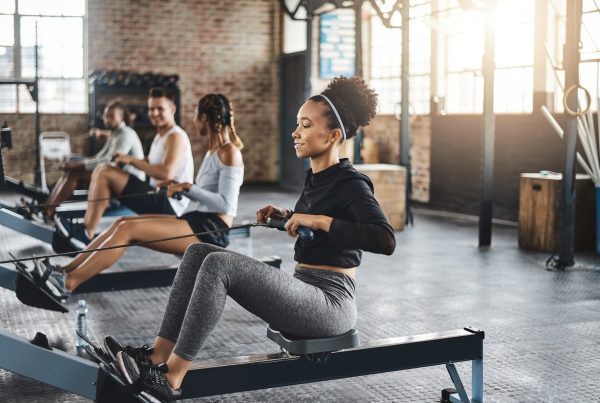Whether you’re completely new to the boutique fitness field or an existing provider, finding a suitable new site is always challenging. That’s why Sweat spoke to Goldstein Ween, the architects behind ‘Another Space’ – the newly-opened boutique fitness concept from The Third Space – to get the inside track on sourcing a killer site.
i) Do some big picture thinking before you even look at sites.
What’s the sort of space you want to create? Is there going to be an entry system? A private space? Do you want to be seen when you’re inside? Do you want empty frontage? Considering these things from the get-go should help you avoid lots of wasted time looking at sites that just aren’t suitable for your brand or concept, suggests Kenny Sykes, Architect and Associate at Goldstein Ween: “Think early on about whatever it is that’s going to separate your boutique outfit from the rest. If the brand is right, it informs everything else, from what the stairs will look like – should they be glass or spiral for example? – to what kind of yoga mat you use.”
ii) Beware of planning issues (and hire an expert to help)
“Planning can vary according to borough – local policy varies, so it’s best to contact the borough directly on this,” says Sykes. “In some areas (particularly outside London) a fitness studio might be deemed a positive addition to the area and thus allowances are made, whereas in more saturated locations, resistance can be fairly great.” The existing use of the property is also important; what the building was and what it will be turned into has an impact on decisions that are made. (Building use categories range from leisure to residential, offices, and more.) “That’s why we’d advise hiring a Planning Consultant – often retired planning officers,” says Goldstein Ween Director, Mark Goldstein. “It’s a good value way to discover what’s possible and educate yourself about the infrastructure.” Another thing to bear in mind: “Lots of boroughs don’t like having ‘empty’ frontage (with little happening), hence why health clubs (where people disappear into studios and showers that can’t be seen from the street) are so often in basements,” says Goldstein. “If you find a basement in a commercial area, you have a very good chance of being able to discuss a fitness space with planners.”
iii) Consider space and sound
There’s a lot about choosing a site that can get very complicated, fast. One example is the issue of sound: if you’re offering high intensity, high octane fitness classes, for example, you may wish to make a bit of noise and that can cause big problems with neighbours (residential ones in particular). “Think about priorities,” advises Goldstein. “If you’re determined to choose a space where you must keep the noise down then you could make your space soundproof. But that costs a lot of money, so you might want to not choose that space and spend the money on equipment instead.”
iv) Create a crackpot team (because brand, building and design are all connected)
Find good architects, designers and builders you trust. This can be as simple as visiting health clubs whose design and interiors you like and just asking who did the work! “Some architects can also work on interior design and even help with small elements of branding / brand discussions,” says Goldstein. “It’s a chicken and egg question: where does design begin and branding end? If you hire someone good, whom you trust, you could help your business to fly from the outset. “We are responsible for getting people in the doors on the first day,” says Goldstein. “But nobody comes back if the training is awful. You have to have really good people and good training that inspires.”

More People More Active More Often




